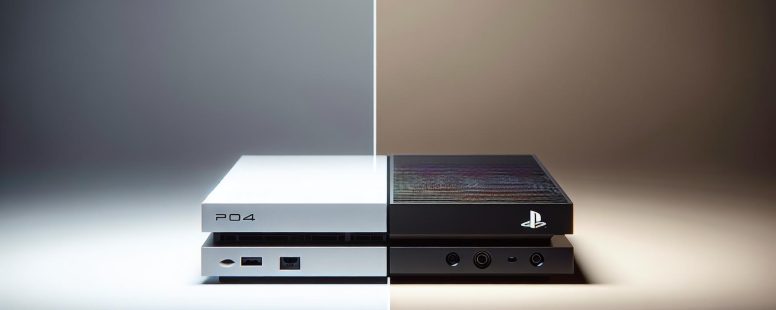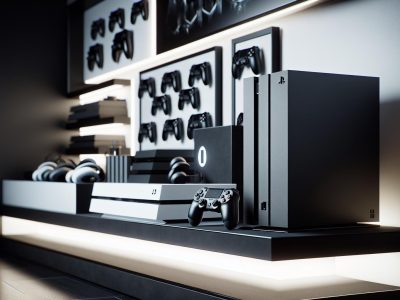Difference Between Xbox One S and Xbox Series S: A Detailed Comparison for Gamers
Gaming has come a long way, and so have the consoles that bring your favorite adventures to life. If you’re deciding between the Xbox One S and the Xbox Series S, you’re probably wondering how these sleek machines stack up. At first glance, they might seem similar, but beneath the surface lies a world of differences that could transform how you play.
Imagine faster load times, sharper graphics, and smoother gameplay. Or maybe you’re after a budget-friendly console that still delivers solid performance. Each of these systems offers its own unique blend of features, catering to different gaming styles and priorities. Whether you’re upgrading or buying your first console, understanding these differences can help you make the perfect choice for your gaming setup.
Overview Of Xbox One S And Xbox Series S
The Xbox One S, released in 2016, serves as a refined version of the Xbox One. It’s designed for gamers seeking a cost-effective console with reliable performance. Equipped with an eight-core AMD CPU, 8GB of DDR3 RAM, and a GPU offering 1.4 teraflops (TFLOPS), it supports games up to 1080p resolution. The inclusion of a 4K Ultra HD Blu-ray player adds value for media enthusiasts, allowing playback of UHD content.
The Xbox Series S, launched in 2020, is part of the ninth generation of consoles. It prioritizes digital gaming and advances performance with its custom AMD Zen 2 processor, delivering 4 teraflops of GPU power and 10GB of GDDR6 RAM. Designed for targeting 1440p gameplay, it also supports upscaling to 4K resolutions. Unlike the Xbox One S, the Series S lacks a disc drive, limiting it exclusively to digital purchases.
The Series S features a modern architecture optimized for faster load times and improved graphics fidelity. Microsoft’s Velocity Architecture leverages its SSD technology to reduce loading wait times significantly compared to the One S. Through innovations like Quick Resume, it allows switching between multiple games almost instantly, enhancing your gaming experience.
If you prefer physical discs and a more budget-friendly option, the Xbox One S may meet your requirements, while the Xbox Series S caters to digital-only users who prioritize performance and next-gen features.
Key Differences In Design And Build
Xbox One S and Xbox Series S feature distinct designs reflecting their respective generations and target audiences.
Size And Weight
Xbox One S has a larger and heavier build, measuring 11.6 x 9 x 2.5 inches and weighing around 6.4 pounds. Its design incorporates a physical disc drive, contributing to its bulkier profile. In comparison, Xbox Series S is more compact and lightweight, measuring 10.8 x 5.9 x 2.5 inches and weighing approximately 4.25 pounds. The smaller size of the Series S complements its digital-only approach, making it ideal for tighter spaces or portable setups.
Port And Connectivity Options
Xbox One S includes an HDMI output and input, three USB 3.0 ports, an Ethernet port, and an IR blaster for integration with external devices. It also supports a 4K Blu-ray drive for physical media. The Xbox Series S, ditching the disc drive, offers one HDMI 2.1 output and two USB 3.1 ports alongside an Ethernet port. This configuration prioritizes high-speed data transfer and compatibility with modern gaming peripherals.
Performance And Hardware Specifications
Both Xbox One S and Xbox Series S cater to different gaming needs, with significant differences in hardware and performance. Understanding their CPU, GPU, and storage capabilities helps you make an informed choice.
CPU And GPU Comparison
The Xbox One S features an eight-core AMD Jaguar CPU clocked at 1.75 GHz and a GPU with 1.4 teraflops of processing power. This setup smoothly handles games at 1080p, providing steady frame rates for titles like “Rocket League” and “Minecraft.”
The Xbox Series S uses a custom AMD Zen 2 CPU with eight cores at 3.6 GHz and a GPU delivering 4 teraflops. This architecture supports 1440p resolution and upscaling to 4K. Performance enhancements include ray tracing for realistic lighting and shadows. Titles like “Forza Horizon 5” showcase these advancements through dazzling visuals and responsive frames.
Gaming enthusiasts notice a vast difference when playing newer AAA titles. The Series S loads faster and runs games optimized for the next generation due to its superior GPU and processing speed.
Storage Capabilities
The Xbox One S includes a 500GB or 1TB HDD, enough for smaller game libraries. But, its hard disk read and write speeds can’t match the demands of modern titles, leading to longer load times.
In comparison, the Xbox Series S integrates a 512GB SSD using Xbox Velocity Architecture. This drive significantly reduces load times and enables features like Quick Resume, allowing you to switch between games in seconds. Storage expansions are possible through Seagate’s proprietary expansion cards.
Gaming Experience And Graphics
The Xbox Series S and Xbox One S deliver distinct gaming experiences, defined by differences in hardware and performance capabilities. When exploring load times, frame rates, and backward compatibility, you’ll notice how these factors shape overall immersion.
Load Times And Frame Rates
Load times on the Xbox Series S massively outperform those of the Xbox One S. Thanks to the 512GB SSD, the Xbox Series S reduces load times significantly, allowing games like “Forza Horizon 5” to launch in under 20 seconds, compared to approximately 60 seconds on the Xbox One S’s HDD. The solid-state drive also enables Quick Resume, letting you switch between multiple paused games with no delay. The One S, with its traditional hard drive, lacks this feature and requires longer waits.
Frame rates directly impact gameplay smoothness. The Xbox Series S supports up to 120 FPS in optimized titles, such as “Call of Duty: Warzone,” providing fluid motion, especially in rapid scenarios. In comparison, the One S typically runs games at 30-60 FPS, which feels less responsive during action-heavy gameplay. The added GPU power makes 1440p resolution achievable on the Series S, creating sharper visuals than the 1080p cap of the One S.
Backward Compatibility
Backward compatibility enhances the versatility of both consoles but varies in implementation. The Xbox Series S, with its advanced architecture, enhances the performance of older games, providing higher frame rates and reduced load times for titles like “Halo 5: Guardians.” It also uses Auto HDR to improve visuals on older games natively. The One S offers basic backward compatibility, running Xbox 360 and Xbox titles but without these enhancements.
Neither console supports the Xbox One S’s 4K Ultra HD Blu-ray playback in backward games since the Series S is fully digital. If you still own and enjoy physical Xbox 360 or original Xbox discs, the One S keeps that part of your library accessible. But, the Series S compensates with its integration into Xbox Game Pass, offering hundreds of backward-compatible titles digitally with enhanced performance.
Price And Value Proposition
The Xbox One S, which launched in 2016, typically retails between $200 and $300, depending on its storage capacity and retailer promotions. This pricing positions it as a budget-friendly option for gamers who prefer physical media, thanks to its built-in 4K Ultra HD Blu-ray player. If you’re looking for a cost-effective console that still offers reliable performance for 1080p gaming, the One S provides good value for its price point.
On the other hand, the Xbox Series S debuted in 2020 with a suggested retail price of $299. While the upfront cost may be similar to the higher end of the One S range, it’s important to factor in its all-digital nature. The lack of a disc drive means you’ll rely entirely on digital purchases or Xbox Game Pass subscriptions. For gamers invested in next-gen technology and faster performance, the Series S offers enhanced features—such as 1440p gameplay, SSD storage, and ray tracing—that make it a future-proof choice at an affordable price.
Consider ongoing costs when evaluating these consoles. The Xbox Series S may appear more economical over time if you use the Xbox Game Pass library, which supports hundreds of digital titles. In contrast, collecting physical games with the Xbox One S could lead to higher costs, especially for rare or limited-edition releases.
In terms of value, the Xbox One S appeals to gamers who seek affordability and physical media compatibility. The Series S, with its superior hardware and digital ecosystem, targets those embracing cloud gaming and the convenience of digital-only libraries.
Conclusion
Choosing between the Xbox One S and Xbox Series S comes down to your gaming priorities and budget. If you’re drawn to modern performance, faster load times, and enhanced visuals, the Series S is a strong contender. On the other hand, the One S remains a reliable option for those who prefer physical media and a more traditional gaming experience.
Both consoles offer unique strengths, so it’s essential to evaluate what matters most to you. Whether you’re upgrading or starting fresh, your decision will eventually shape how you enjoy gaming in the years ahead.
- Understanding the Difference Between Oath and Affirmation: Key Facts You Need to Know - October 30, 2025
- Understanding the Difference Between Annulled and Divorced: Key Legal and Emotional Insights - October 30, 2025
- Ibuprofen vs. Aspirin: A Comprehensive Comparison - October 30, 2025







